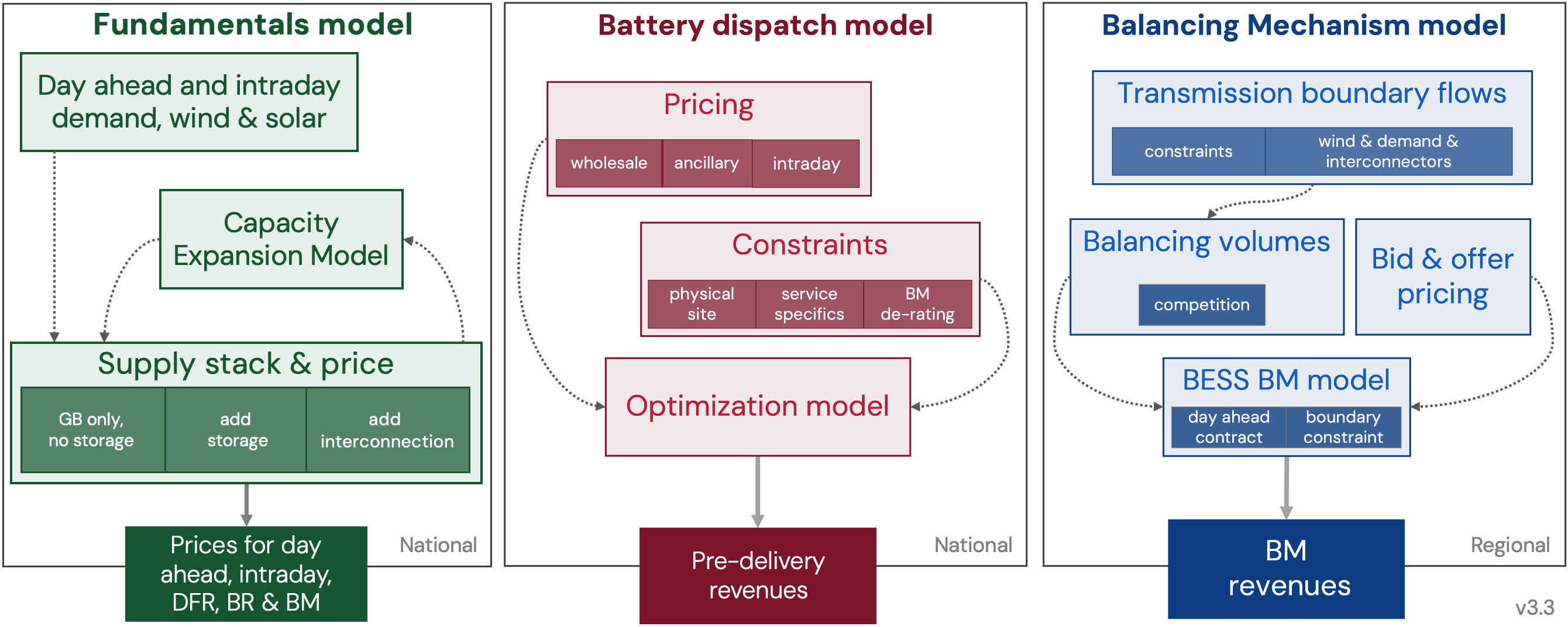Introduction to our forecasting
Welcome to the methodology for the Modo GB Forecast.
Check out more details of this on our platform intro page, and book a demo here!

A radically different battery revenue forecast
- Built in-house: our entirely new model built from the ground up gives a fresh view of future revenues for battery energy storage
- Data-driven for storage : we use our industry-leading view of today to model storage for tomorrow and beyond to give you a data point per half-hour to 2050.
- Transparent: core inputs are based on reputable third parties like the NESO Future Energy Scenarios, NREL, Europe Economics, the IEA, and ICE. For full transparency, the model and method are detailed in this guide.
- Principled: we've built the forecast we would use. It's plug-and-play into a business model, highly locational, and uses the latest Modo benchmarking and research data to inform, adapt, and explain.
- A capacity buildout that reflects the real world: commercially scalable and proven technologies realistically respond to economics, with other parts of the generation mix fixed. Our capacity expansion model iterates on the build-out (and retirement) of gas and battery storage, while solar, wind, and nuclear are fixed.
Modelling a 'sensible' GB power system
- The consumer must face a realistic price for wholesale power. With wind and solar growth, the price trends down over time, and price spreads are expected to increase.
- There cannot be an expectation for significant periods of loss of load, e.g., more than 3 hours.
- To be built, new gas and battery storage must hit IRR targets, while retirement decisions on existing plants are made based on discounted cash flows. CCS plants will only be built near regional hubs in the Humber and Mersey.
- Minimum prices will find a floor at £0/MWh as subsidy regimes expire.
This guide describes each part in some detail. Use the sidebar or search (command + K) to navigate to the details you're interested in.
Our model is made up of three parts

- Fundamentals model for power prices at day ahead and intraday. These are driven by half-hourly supply stacks, informed by a techno-economic capacity build-out for certain generation types and variable short-run marginal costs
- Battery dispatch model using mixed integer linear programming to dispatch flexibility into day-ahead and intraday markets optimally
- Locational Variations due to the Balancing Mechanism, capturing the future build-out of transmission infrastructure
Check out each of these in the panel on the right.
Updated about 2 months ago